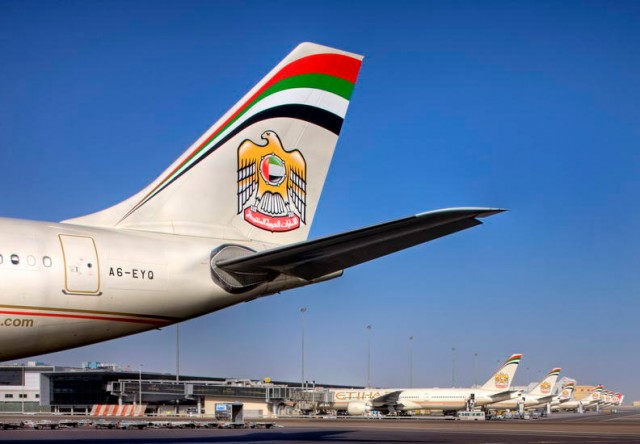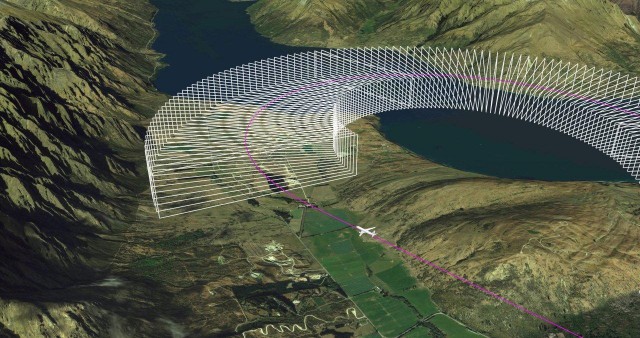This post was written by Steve Fulton, Technical Fellow at GE Aviation for AirlineReporter.com. Steve has been nuts about airplanes for as long as he can remember, working in high school in the antique airplane restoration business and trading work time for flying time in a PT-17 Stearman and Piper J-3 Cub. As a Technical Fellow, Steve spends his time meeting with GE customers to interpret their needs and translate that into innovative products and services, and he is continually seeking new ways to improve the air transportation industry.
It isn’t your imagination: more people are flying than ever before. The FAA predicts that air travel in the U.S. alone will double in the next 20 years, and will reach one billion passengers by 2021. Unfortunately, the finite amount of airspace to handle all of this air traffic is not being used as efficiently as current technology and methods would allow.
In an effort to improve this situation, I have spent the past 20 years working to accelerate the global adoption of a new air travel system that is characterized by predictability. This system, which I have likened to an interstate highway system in the sky, will help make air travel more efficient, providing numerous time, cost and environmental benefits. In fact, the impact of deploying this system at 46 regional airports across the United States could conservatively save an estimated 12.9 million gallons of gas and reduce 274.6 million pounds of CO2 emissions, not to mention slice off two years of time spent in the air.
In addition to allowing flights to depart precisely on time by better managing the flow of air traffic in and out of airports, highways in the sky will also allow aircraft to fly more accurate trajectories by shifting from ground-based navigational aids to a satellite-based system. Because pilots are no longer reliant on ground-based aids, it is now easier to maneuver aircraft in constrained mountainous regions, improving access to remote locations and increasing global connectivity.
Each country, airline and route has its own unique infrastructure, and therefore requires a specialized approach when working to solve the global airspace congestion issue. The work being done at Abu Dhabi International Airport, for examplewhere Airbus is collaborating with Etihad Airways to roll out optimized trajectories that shorten the approach paths to the runwayis different from the work in the mountainous airspace between Cusco and Lima. It is important to find a solution that is tailored to the distinctive needs of one challenge, while assuring its interoperability with other air traffic management systems on a regional and worldwide scale.
A significant effort along these lines is SESAR (Single European Sky ATM Research), a collaborative initiative to reform the European airspace and unite all of the varying systems of its countries under a singular air traffic management program. Last month I attended CANSO’s World ATM Congress, where the consistent theme was enhancing the performance of airspace and doing so by all stakeholders working together. CANSO is committed to collaborating with its partners and stakeholders and is working to make sure all of the talk and proposals of the event are converted into actions and deliverables. A good example of this is CANSO’s commitment to work with IATA and its member airlines on the implementation of ICAO’s System Block Upgrades on the aircraft, further rollout of Performance-based Navigation and the implementation of ADS-B worldwide. These are important elements necessary for deployment of highways in the sky across the globe.
Ultimately, it is a puzzle with many unique and intricate pieces, and many players working to fit them together. Thanks to David’s invitation to allow me to speak to the passionate, informed community that he has worked to cultivate, in my coming posts I hope to discuss some of the regional efforts to implement a revolutionary technology that is improving the way we travel. I hope to provide informative and interesting insight into how the aviation industry is working together to accommodate the rising demand in air travel, and ensuring sustainable growth.


Steve’s words are spot-on. There are a few souls at FAA that share his vision, but not nearly enough. As is often the case, the primary, underlying road block is BUDGET. Sooner or later, someone has to pay for these improvements and the current Congress has not seen fit to provide the necessary funding.
Just like the interstate highway system, the delays in the air traffic system aren’t the enroute portion. The delays in the interstate system are caused by interchanges. The delays in the air traffic system are caused by the lack of runways. NextGen ATC and ‘highway in the sky’ technology only slightly optimize the already constrained runway space.